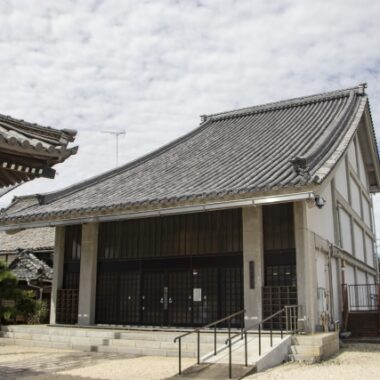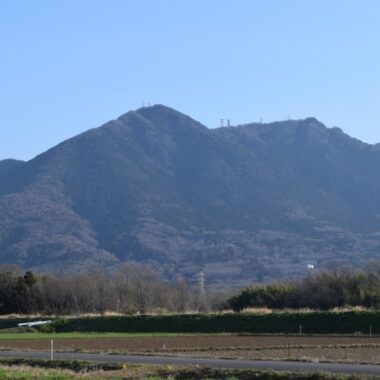In cases where litigation is instituted, which court needs to conduct actual litigation procedures is a matter directly related to the burden of the plaintiff’s prosecution of litigation. Even if there is a means such as a telephone conference, the plaintiff will bear the time required for the plaintiff and/or an agent to appear at the court on the date of oral argument, especially on the date of examination of witnesses. The plaintiff will generally bear the expenses required for the plaintiff and the attorney who is the agent to appear at the court. Therefore, the plaintiff will have a deep relationship with the plaintiff’s economic burden.
This does not change in pollution litigation. However, in principle, whether the court of the place of residence has land jurisdiction determines whether the court of the place of residence is capable of filing lawsuits and taking litigation proceedings in the court of the current place of residence.
A common form of litigation for pollution lawsuits is a lawsuit to claim compensation for damages. However, in some cases, a lawsuit requiring a judgment that requires that a person be recognized as being subject to remedy is filed if there is a law to remedy a victim of pollution. The former is a civil lawsuit and the latter is an administrative lawsuit.
Since the lawsuit has land jurisdiction at the location of the defendant on the side where the lawsuit is filed, the lawsuit also has land jurisdiction at the location of the head office of the corporation responsible for the pollution that will be the defendant. However, in litigation for compensation for damages, in addition to this, land jurisdiction will also arise on the land where pollution has occurred.
In the case of Minamata Disease Litigation, which is a typical pollution litigation, in recent years, when filing a lawsuit for compensation for damages, it is common to merge a claim for compensation for damages against Chisso, the company responsible for pollution, and a claim based on the State Compensation Act against the State and Kumamoto Prefectures. In this case, in addition to Osaka, where Chisso’s head office is located, there will be land jurisdiction in Tokyo and Kumamoto, which have ordinary jurisdiction of the State. When a court is filed with the State as a defendant, the address of the defendant shall be Kasumi, the address of the Ministry of Justice, 1-1, Seki, and the Minister of Justice (the name of the Minister of Justice) with the defendant as the State and the representative.
In this way, if you choose to file a claim for damages in a Minamata disease suit, there will be a relatively large number of land jurisdictions. If a lawsuit is filed after exposure to the polluting agent for polluting diseases for a reasonable period of time after relocation from the polluting area of Minamata Disease, it is not always necessary to file the lawsuit with the district court of Kumamoto or Kagoshima, where the polluting agent has been exposed to Minamata Disease.
On the other hand, what is the jurisdiction of jurisdiction when a lawsuit requiring obligation is chosen?
When a victim of Minamata Disease requests a definitive obligation to be recognized under the Act on Compensation for Pollution-Related Health Damage, etc. (hereinafter referred to as the “Public Health Act”), the lawsuit for the definition of an application becomes an appeal lawsuit (hereinafter referred to as the “Administrative Case Litigation”) Article 3(6)(ii) and Article 37-3(1)(ii), but the lawsuit for the cancellation of the original application under the Public Health Act will be merged under Article 37-3(3)(ii) of the same Act (hereinafter referred to as the “original dismissal of the application under the Public Health Act”).
In addition, the public entity to which the administrative agency that made the original dismissal disposition pursuant to Article 11, Paragraph 1 of the Code of Conduct (Article 38, Paragraph 1 of the Code of Conduct applies mutatis mutandis to the lawsuit for the definition of approval disposition) becomes the defendant (the actual application and approval of the Public Health Law is filed by Kumamoto Prefecture, Kagoshima Prefecture, etc. of the local public entity instead of the national government), and the land jurisdiction is established at the prefectural agency location of the prefecture that made the original dismissal disposition pursuant to Article 12, Paragraph 1 of the Code of Conduct (Article 38, Paragraph 1 of the Code applies mutatis mutandis to the lawsuit for the definition of approval disposition).
By the way, the Supreme Court’s decision on April 16, 2013 (hereinafter referred to as “Mr. F’s suit”) can be cited as a representative case of a lawsuit requiring the recognition of Minamata disease in recent years. This lawsuit was filed with the Kumamoto Prefecture, which had made the original dismissal, as the defendant, and requested the revocation of the original dismissal and the obligation to recognize Minamata Disease. However, the first instance was pending in the Osaka District Court, not in the Kumamoto District Court. It is Kumamoto Prefecture that the plaintiff filed an application for the Public Health Law and that the plaintiff dismissed the plaintiff, so it is likely that the land jurisdiction of the lawsuit for revocation of the plaintiff dismissal and definition is Kumamoto. Nevertheless, it seems strange that the court was not pending in the Kumamoto District Court. In fact, this is due to the following circumstances.
After the Kumamoto Prefecture’s application for approval of the Public Health Law was dismissed, the plaintiff filed a request for review against the Pollution-Related Health Damage Compensation Appeal Board against the disposition. The request for review was also dismissed, and the plaintiff called for relief from the court and filed a lawsuit. As a result of the decision to dismiss the request for examination, Mr. F’s court of first instance (the decision of the Osaka District Court on July 16, 2010) decided to merge the request for the revocation of the decision of the Appeal Board for Compensation for Environmental Pollution-Related Health Damage against the State with the request for the revocation of the application for dismissal of the Minamata Disease recognition application and the request for the definition of the treatment for the Kumamoto Disease recognition from Kumamoto Prefecture. The Kumamoto Prefecture was the defendant for the part requested by (a), but the State was the defendant for the part requested by (c), and the place of address of the plaintiff was within the jurisdiction of the Osaka High Court. Therefore, the Osaka District Court was under the jurisdiction of the court with specific jurisdiction set forth in Article 12, Paragraph 4 of the Code of Practice.
In some cases, however, the application was dismissed but an appeal to the original dismissal was not filed. In this case, if a compulsory lawsuit is instituted, Mr. F’s lawsuit will require only the part of ≈ and will not be able to merge the request of the part of ≈ in the case of Mr. F’s lawsuit. Then, the defendant will be the only prefecture that dismissed the plaintiff, the State will not be the defendant, and the jurisdiction of the court of specific jurisdiction under Article 12, Paragraph 4 of the Code of Compulsory Procedure will not arise.
However, people living in remote areas often receive explanations at offices outside the prefecture near their residence (hereinafter referred to as “out-of-prefecture offices”), and have their checkups at prefectural designated hospitals near their residence. Therefore, it may be problematic whether the location of the office outside the prefecture near their original residence is subject to land jurisdiction under Article 12, Paragraph 3 of the Code of Practice. However, the Supreme Court’s decision on February 27, 2001 states that:
It is reasonable to interpret the term “lower-level administrative organ that was responsible for the treatment of cases” as meaning a lower-level administrative organ that was substantially involved in the treatment of cases itself in relation to the disposition, etc. Whether or not it can be assessed that the disposition, etc. has been substantially involved in the processing of the case itself should be determined by taking into consideration the content and nature of the disposition, etc. in light of the purpose of the legislation described above, and taking into consideration the concrete form and extent of the involvement of the lower-level administrative organ, and the degree of influence on the disposition, etc. in a comprehensive manner. From this point of view, it should be concluded that the subordinate administrative organ, in principle, cannot be regarded as substantially involved in the processing of the case itself, in cases where the subordinate administrative organ assists the collection of materials necessary for the establishment of the disposition or only takes part in the investigation of the case at the request of the disposition agency, or in cases where the subordinate administrative organ receives the application form and its attached documents, conducts a formal examination of the application form, points out the deficiency to the applicant, makes an amendment to the applicant, and completes the attached documents, and then proceeds to the disposition agency.
In view of the purpose of the decision of the Supreme Court, it is unlikely that an office outside the prefecture has “been involved in the processing of the case” if a written notice of the decision to dismiss the original disposition has been issued by the head of the department in charge of the Public Health Law of the prefecture or by the name of the section chief. In doing so, it would be quite difficult to claim that the special land jurisdiction set forth in Article 12, Paragraph 3 of the Code of Complaints of Exercise would arise near the place of residence. Therefore, in the case where an action for obligation is to be filed without filing an appeal against the original dismissal disposition, it is considered that the action will be filed with the court located in the prefecture where the original dismissal disposition was filed.
However, the time and economic burden of bringing lawsuits to courts in Kumamoto Prefecture and Kagoshima Prefecture by people living in remote areas such as Osaka, Aichi Prefecture and Tokyo will be heavy as described above.
In such a case, there may be a view that a lawsuit for compensation for damages should be filed. However, in pollution lawsuits, the subject matter of the lawsuit for compensation for damages and the subject matter of the lawsuit for obligation are not necessarily the same, and the likelihood of winning the lawsuit is not the same. Given this, it is preferable to expand the scope of administrative litigation in pollution litigation from the viewpoint of relief for pollution victims.












